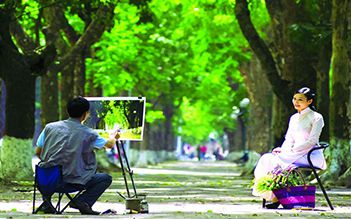Overview
Imperial Citadel is the entire royal palace complex in Vietnam, which has gone through more than 200 years of age, with about 140 imposing and superficial buildings. Traveling there, you will admire the artistic masterpieces of majestic palaces and magnificent temples in ancient quiet space.
The ancient imperial city of Hue was constructed under the reign of King Gia Long and Minh Mang, located north of the Perfume River, facing south, with a harmonious combination of traditional Vietnamese architectural principles and philosophical thought Eastern logic with the Five Elements yin yang theory, and the essential characteristics of Western military architecture.
The panorama of Hue Citadel, Imperial Citadel and Tu Cam Citadel (collectively referred to as Hue Imperial Citadel) is interlocked and arranged to be posted on an axis across from the South to the North. The Citadel is a square with a circumference of 10km, 6.6m high, 21m thick, consists of 10 main gates and an auxiliary gate with Tran Binh Dai called Thai Binh Mon. Around and just above the castle, there are 24 defensive fortresses. Also, outside the city walls, there is a covered canal system.
In modern-day Vietnamese history, the Imperial Citadel is the most massive with tens of thousands of people participating in construction, millions of cubic meters of rock, and a tremendous amount of work including digging trenches, filling rivers, moving people, graves, or building walls, lasting for 30 years under the dynasty two kings.
At each Hue Festival, the image of Hue Citadel at night is illuminated fancifully. From Ngo Mon Gate, flags were displayed, along with majestic lanterns, the suspicious smell of incense, and majesty of guards in traditional uniforms which recreates the golden palace space and prosperity.




